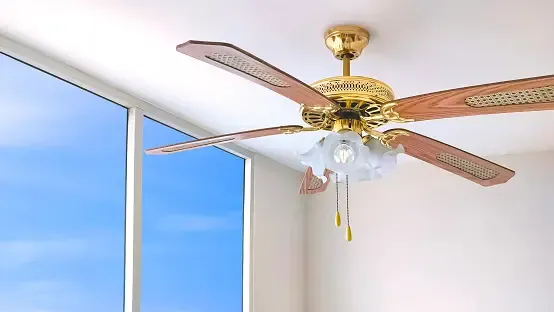
Get A Quote
Outdoor vs Indoor Ceiling Fans: What's the Differences?
Don't let the heat ruin your outdoor oasis. Whether it's your patio, porch, or outdoor living area, finding the perfect ceiling fan can make all the difference. Indoor and outdoor ceiling fans offer versatility, but making the right choice can be a head-scratcher. Relax, we've got your back! Let's unravel the differences between indoor and outdoor fans, covering materials, performance, wet/damp/dry ratings, cost, power and blade designs.
Materials
Indoor Ceiling Fan:
Indoor fans, crafted from wood, particle board, vinyl, or plastic, aren't built to battle the elements. Exposure to extreme temperatures or moisture can lead to rot, mold, and warping. Even metal parts, if not weather-treated, pose a fire hazard. Moisture seeping into the power unit can cause short circuits or, worse, electrical fires.
Outdoor Ceiling Fan:
Outdoor fans, designed to brave tough weather, boast airtight metal enclosures and anodized blade finishes. MacroAir's anodized blades stand strong against rust and corrosion. Fully enclosed power units keep moisture out, ensuring safety and durability for your outdoor space.
Performance
Indoor Ceiling Fan:
Indoor fans, usually smaller, focus on high-velocity airflow for smaller spaces. Pay attention to blade pitch and motor horsepower for optimal performance.
Outdoor Ceiling Fan:
Outdoor fans are larger, ranging from 6 to 24 feet, perfect for expansive outdoor areas. They move significantly more air than indoor counterparts, providing quiet and efficient airflow. Airtight, weather-resistant motors and airfoil blades enhance effectiveness.
Wet/Damp/Dry Rated
Dry-Rated:
Designed for indoor use, these fans should avoid any exposure to moisture. Ideal for office spaces, living rooms, or dry retail areas.
Wet-Rated:
Built to withstand the elements, these fans can handle rain, sun, and snow. Fully enclosed units and weather-proof finishes make them ideal for outdoor spaces like porches or decks.
Damp-Rated:
Suitable for both indoor and outdoor use where direct water contact is limited. Great for covered patios, basements, or areas with humidity.
Cost
Outdoor ceiling fans may cost more, ranging from $2,000 to $6,000. However, the durability and efficiency they offer justify the price. Operating costs, averaging around $1 per day, make them a cost-effective and long-lasting cooling solution.
Power
Generally, ceiling fans are not excessive in their power consumption. In comparison to alternative climate control systems like central heating and air conditioning, fans use only a small fraction of electricity. This makes them a more cost-effective and eco-friendly option compared to air conditioning.
Nevertheless, outdoor ceiling fans need to generate more air movement than their indoor counterparts to achieve the same cooling effect. To accomplish this, outdoor fans require more robust motors to efficiently cool and circulate air in outdoor spaces.
Indoor ceiling fans typically utilize around 10–50 watts per hour. In contrast, due to their larger size and increased power, outdoor ceiling fans often consume approximately 75 watts per hour or more, depending on their size.
Blade Designs
Blade Shape
The blades of outdoor ceiling fans are often shaped and positioned differently than those of their indoor counterparts. Outdoor fans, tasked with circulating a substantially larger amount of air, commonly feature broad blades designed to maximize air movement with each rotation.
Size
The size of outdoor fan blades benefits from the expansive outdoor environment, allowing for larger blades that play a crucial role in enhancing effectiveness. However, larger blades, while pushing more air, are heavier and demand more energy for rotation, resulting in decreased energy efficiency.
Pitch
The pitch, or angle, at which the blades are set distinguishes indoor and outdoor fans. Outdoor fans typically feature a more pronounced pitch, generating a more vigorous air circulation suitable for outdoor spaces where substantial air movement is necessary. In contrast, indoor fan blades typically have a milder pitch, ensuring efficient air circulation within a room without creating a wind tunnel effect.
Conclusion
Selecting the ideal ceiling fan for your space doesn't have to be daunting. Consider your environment, the desired performance, and your budget. Whether indoors or outdoors, finding the right fit ensures you stay cool and comfortable. Don't sweat it—make an informed decision and enjoy a breeze of fresh air.

